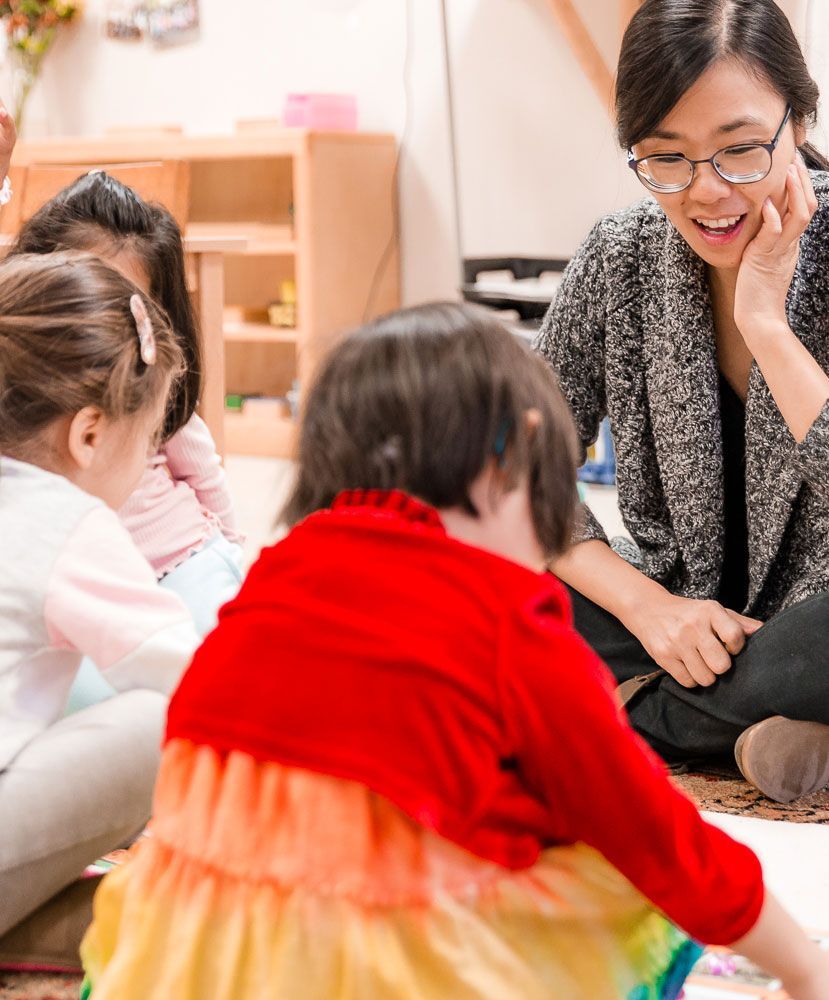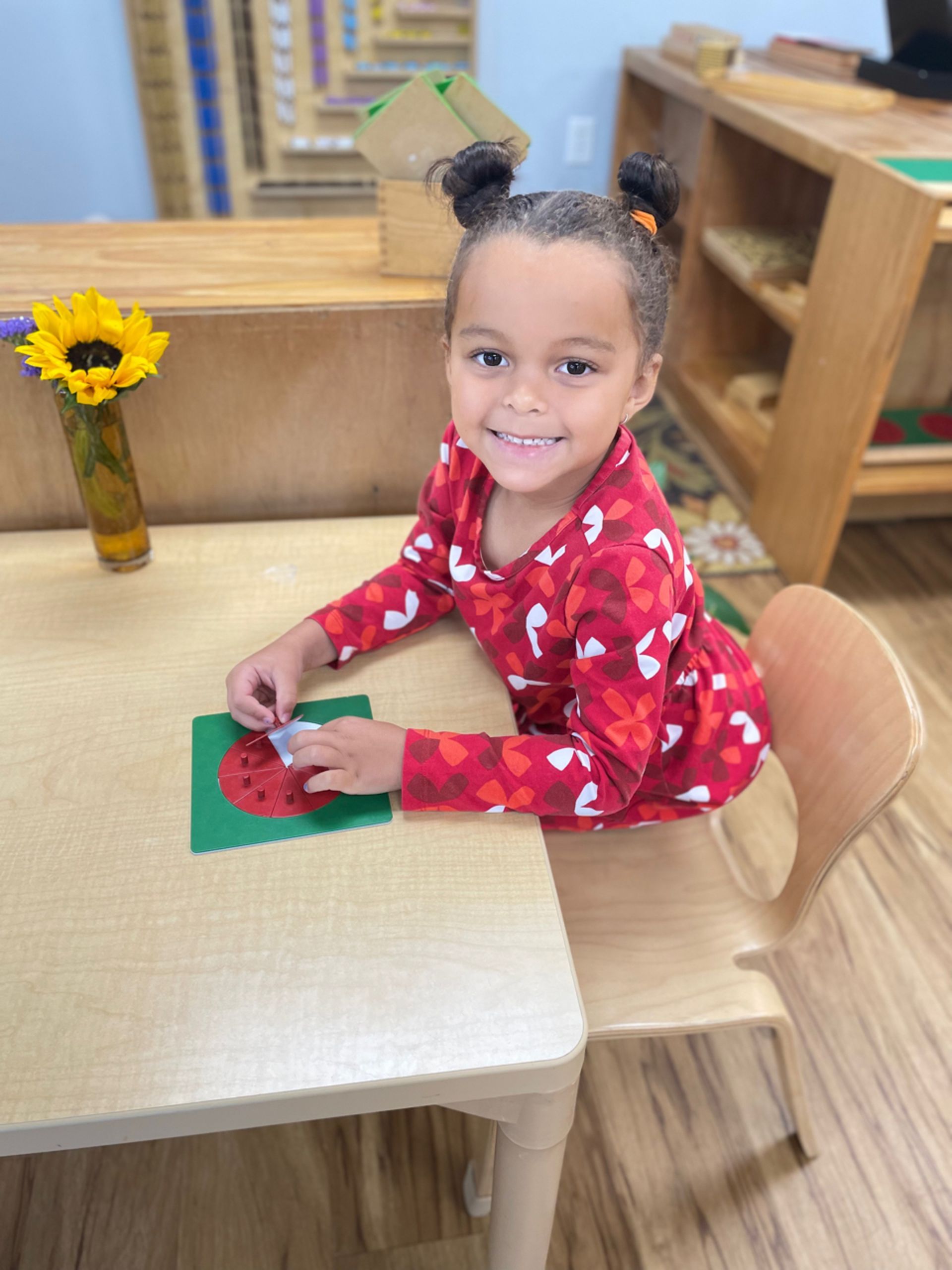MONTESSORI & LANGUAGE IMMERSION
What is Montessori?
A Montessori education considers the whole child, including developmental, emotional, cognitive, and social needs, and provides specific experiences and materials designed to promote self-motivated, independent learners. The Montessori classroom fosters the creation of self-motivated, independent learners. Through individualized support and guidance from well-trained teachers in a prepared environment, children are given the freedom to choose their own tasks, navigate the classroom, and pursue lessons through the lens of their own interests.
For children six and under, Montessori emphasizes learning through all five senses, not just through listening, watching, or reading. Children in Montessori classes learn at their own, individual pace and according to their own choice of activities from hundreds of possibilities. They are not required to sit and listen to a teacher talk to them as a group, but are engaged in individual or group activities of their own, with materials that have been introduced to them 1:1 by the teacher who knows what each child is ready to do. Learning is an exciting process of discovery, leading to concentration, motivation, self-discipline, and a love of learning. Above age six children learn to do independent research, arrange field trips to gather information, interview specialists, create group presentations, dramas, art exhibits, musical productions, science projects, and so forth. There is no limit to what they create in this kind of intelligently guided freedom. There are no text books or adult-directed group lessons or daily schedule. There is great respect for the choices of the children, but they easily keep up with or surpass what they would be doing in a more traditional setting. There is no wasted time and children enjoy their work and study. The children ask each other for lessons and much of the learning comes from sharing and inspiring each other instead of competing.
What is Language Immersion?
Language immersion classrooms are just like other classrooms - with all the usual learning activities taking place in the immersion language. This means that the new language is both the method and object of instruction. This model mimics how people naturally learn their first language; babies learn by hearing repeated words and phrases and gradually make appropriate associations while building on their vocabulary. Young children can easily grasp the language at a time when critical pathways are still being formed in their brains.
The Montessori curriculum establishes the mindset of being a world citizen through its focus on geographical studies, a strong social curriculum, and embracing diversity and peace education. Fusing these elements together teaches children that we are a part of one common human race who are keepers of the Earth and of each other.
In the Early Childhood classroom, teachers know that students will not understand everything they say. Teachers use body language, visuals, objects, exaggerated facial expressions, and expressive intonation to communicate meaning. It is common for children to speak English with each other and when responding to the teacher. As children progress and especially as they move into the Elementary classroom, children naturally use more of the immersion language.
Why International Montessori School?
Children at IMS benefit from these two educational models that naturally complement each other. While the Montessori method of teaching creates the structure for our school and classrooms, classes are delivered in a target immersion language–Mandarin, Spanish, or French. Upon entering our school, families choose a single immersion language for their child to learn in during their time at IMS.
Montessori’s multi-age classrooms and independent learning model are a perfect match for language learners. Children find comfort in a group of children learning along with them and often assist each other along their language-learning path. Because children are treated as individuals, teachers can adjust their language expectations for each child. Children naturally have little inhibition and generally don’t worry about making mistakes. The welcoming classroom environment allows students to help and learn from each other.
The Montessori curriculum establishes the mindset of being a world citizen through its focus on geographical studies, a strong social curriculum, and embracing diversity and peace education. As children are learning from native speakers of the language of the classroom, children are aware of our vast world on a more personal level. Fusing these elements together teaches children that we are a part of one common human race who are keepers of the Earth and of each other.



